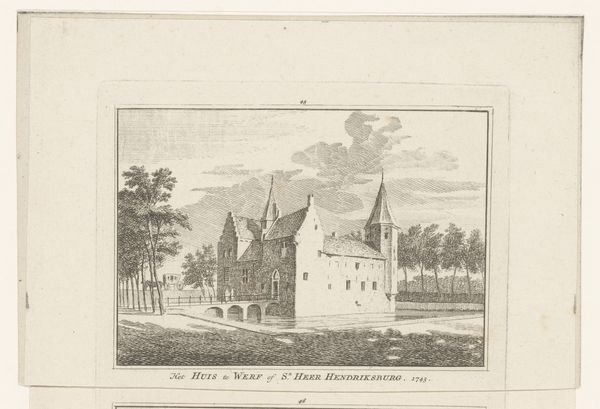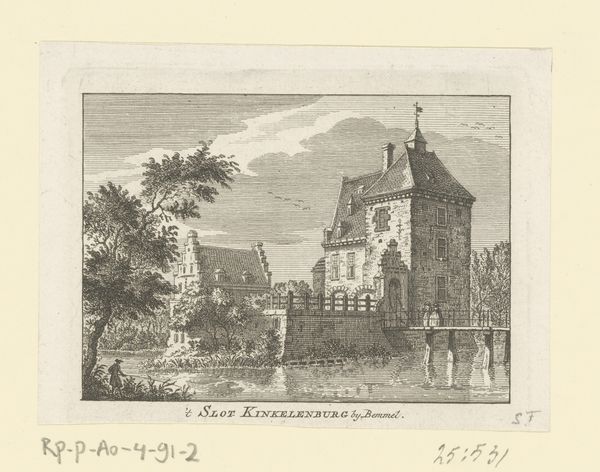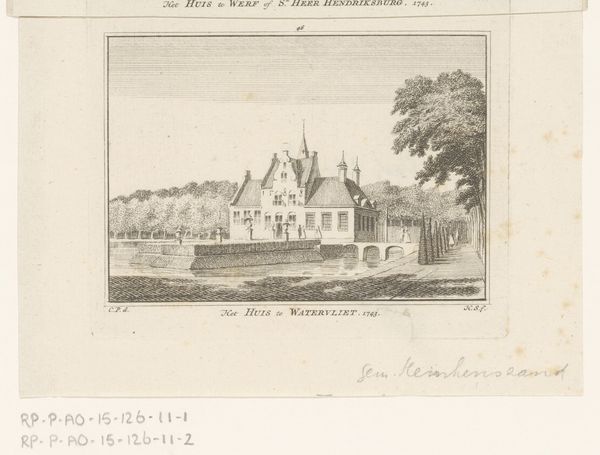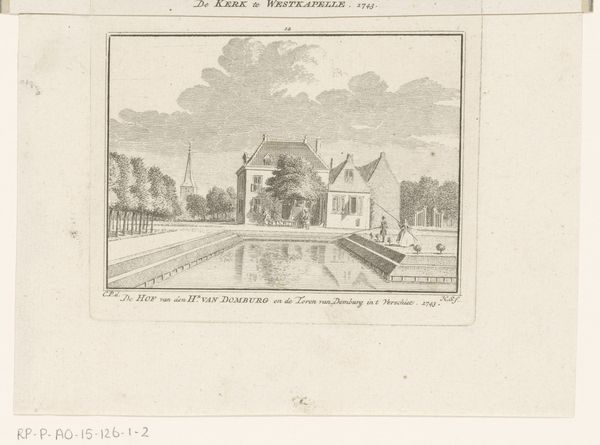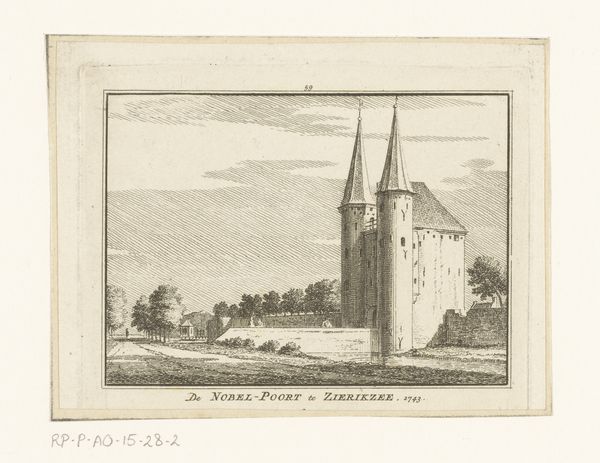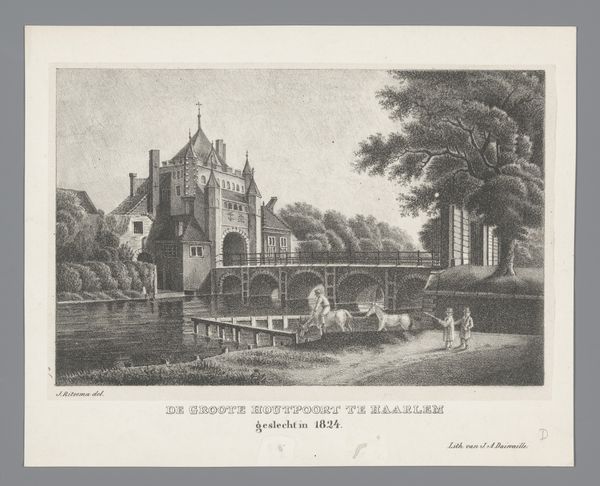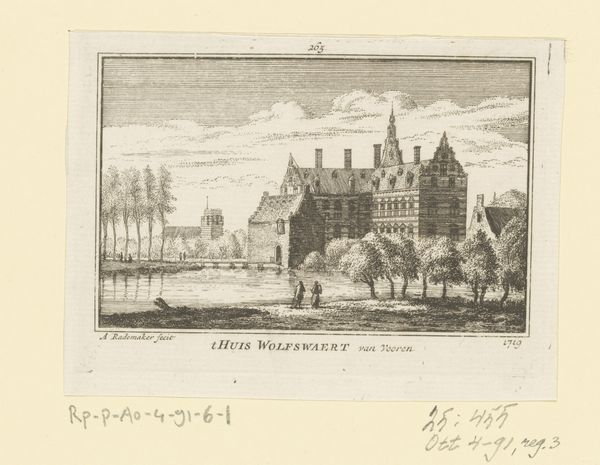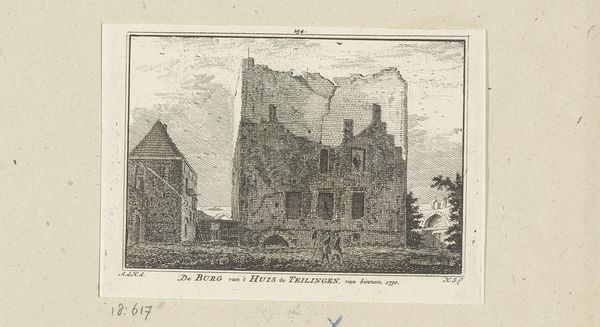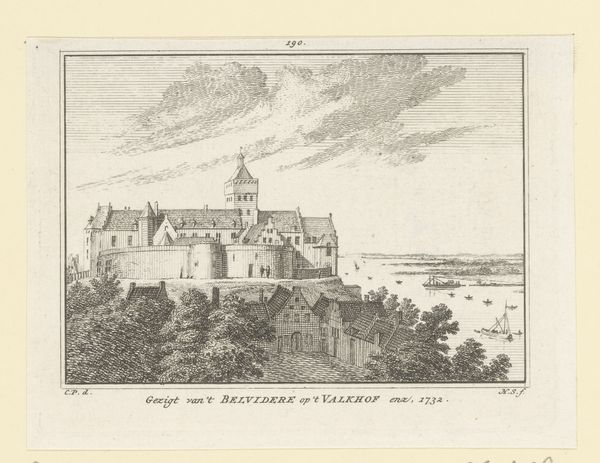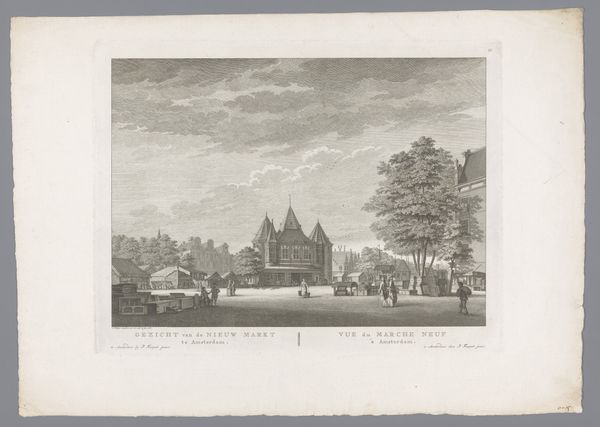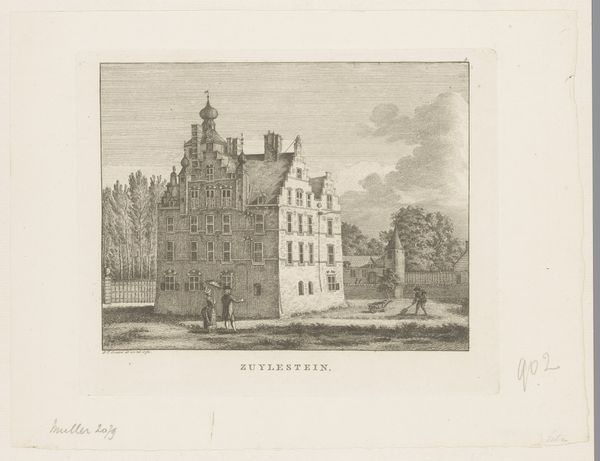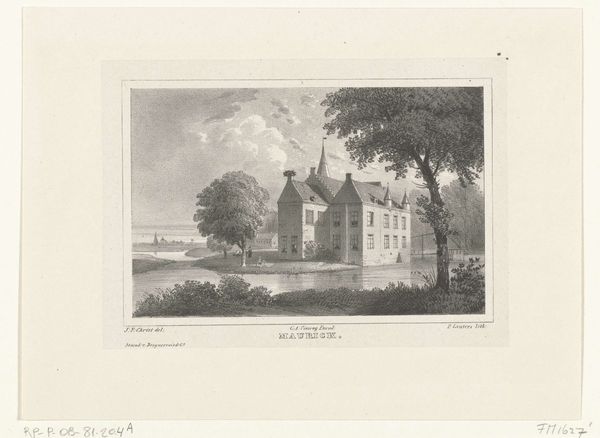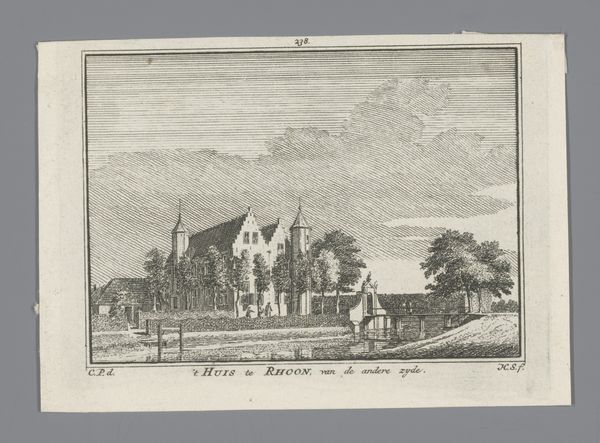
Dimensions: height 82 mm, width 109 mm
Copyright: Rijks Museum: Open Domain
Hendrik Spilman made this print of Huis Windenburg in 1743, using the technique of etching. The image is defined by the marks left by acid on the metal plate. Think about how this process differs from drawing directly: the artist is not just representing a scene, but also engaging with the material properties of metal and acid. The fine lines, the delicate shading – all are products of a carefully controlled chemical reaction. Prints like this were commercial products. They were relatively inexpensive and could be widely distributed, bringing views of grand houses like Windenburg to a broad audience. The very act of etching, a reproducible medium, reflects the growing mercantile culture of the 18th century. So, when we look at this print, we are not just seeing a building. We are also seeing the traces of labor, of industrial processes, and of a society increasingly shaped by mass production. By considering these elements, we can gain a richer understanding of this image, and of the world that created it.
Comments
No comments
Be the first to comment and join the conversation on the ultimate creative platform.

